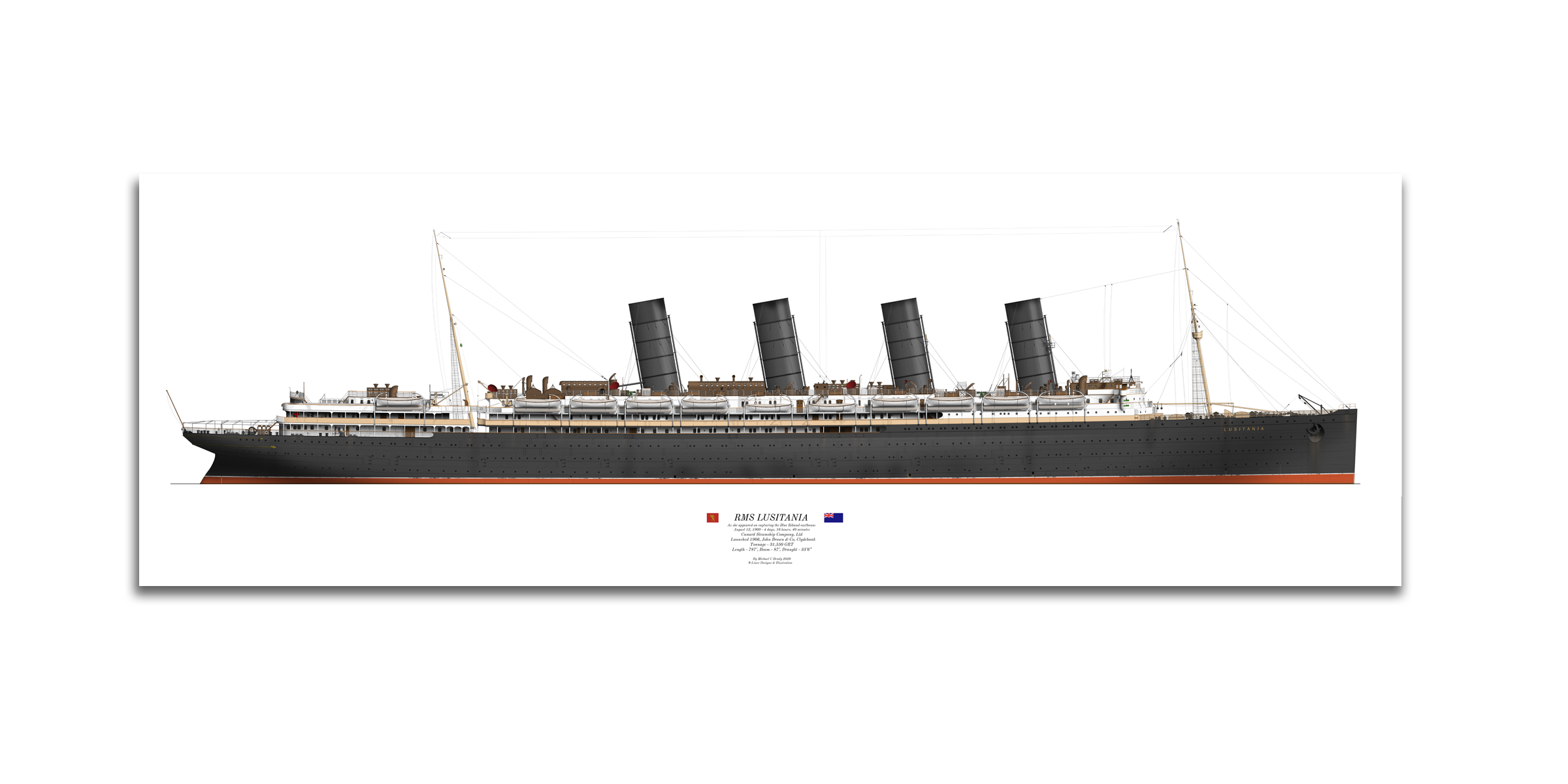RMS LUSITANIA - 1909
As Lusitania appeared on her fastest crossing.
By Michael C Brady
a brilliant ‘flyer’
Although Lusitania did not break a crossing record on her maiden voyage, future crossings proved far more successful for the sleek Cunarder. In August 1909, after having had new four-bladed propellers installed, she recorded her fastest westbound crossing; four days, sixteen hours and fourteen minutes.
Lusitania’s great speed earned her a place among the liners of the Edwardian era, known as ‘greyhounds’ and ‘flyers’; fast vessels designed for express services between American and Europe. Her fastest crossing averaged a blistering speed of 25.85 knots
During Lusitania’s eight-year service, she made a total of 201 crossings on the Cunard Line's Liverpool-New York Route and carried total of 155,795 passengers westbound and another 106,180 eastbound.
explore the drawing
“Lusitania is so well-known for her violent demise but all too often it is forgotten that she had a successful career and was a hugely popular ship, perhaps even more so during her lifetime than her sister Mauretania. I knew early on that I had to show Lusitania in her prime and this is it; running like clockwork, a true Atlantic greyhound.”
-Michael C Brady, June 2021
Aft of the fourth funnel and key equipment can be seen; at centre is the large skylight for the First Class Lounge. At left, skylights and vent units for the engine rooms, and at right the base of her fourth funnel with a pipe exhausting smoke from the Lounge fireplace below.
Lusitania’s original three-bladed propellers were replaced in 1909 with a more modern, four-bladed type which helped her break her own 1907 and 1908 speed records.
Two funnels towers over the Boat Deck - the wooden door visible at far left led to a set of stairs for First Class passengers down to the promenade deck while the second door at right could provide access to the First Class Writing Room and Library, the windows of which can be seen at extreme left with curtains in place.
FEATURED lusitania PRODUCTS
explore other lusitania drawings





















